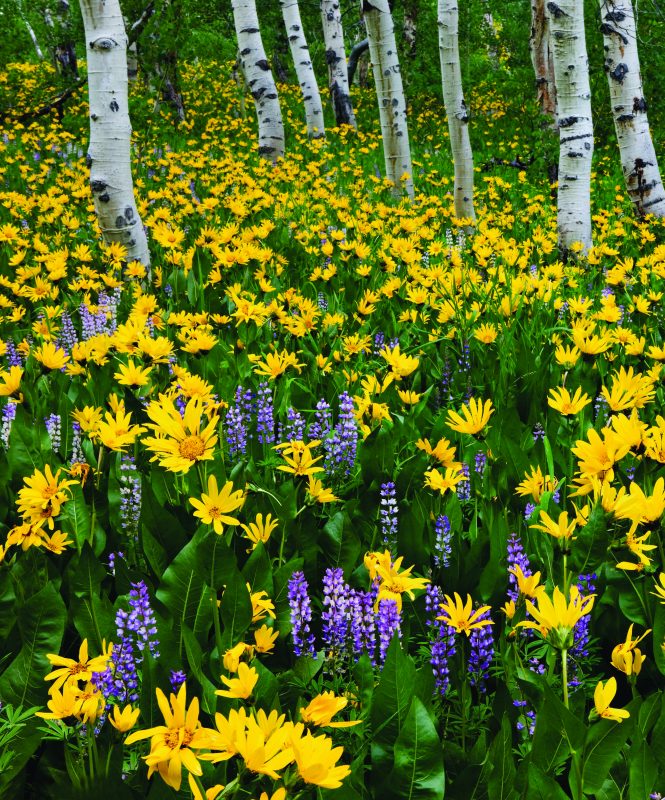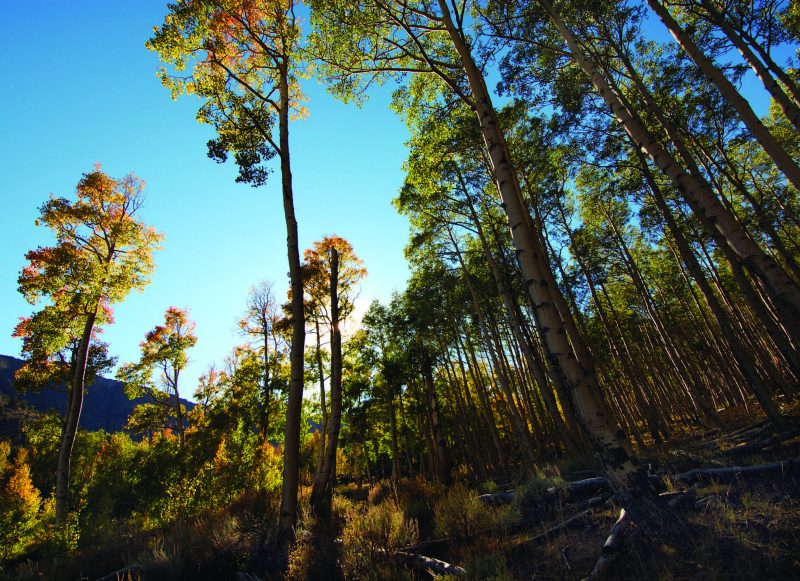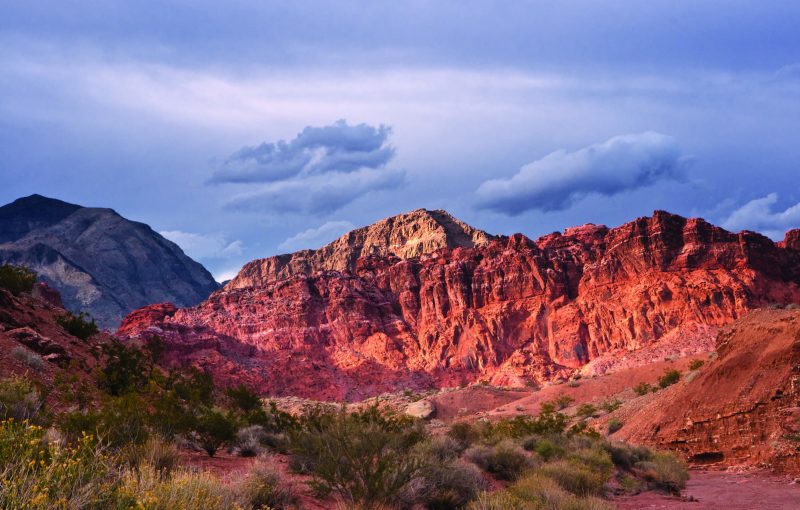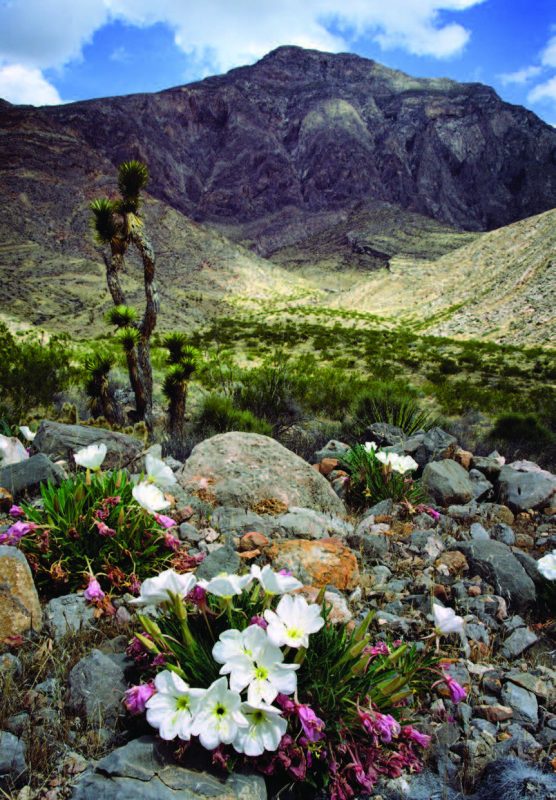Wild Nevada
May – June 2014
WE EXPLORE SEVERAL TREASURES THAT MAKE THE OUTDOORS IN NEVADA SO GREAT. COMPILED & EDITED BY NEVADA MAGAZINE
 One of the most magnificent features of Nevada is our great outdoors. Whether you’re reeling in a rainbow trout as the sun fades behind the majestic Lamoille Canyon walls or conquering the frost-tipped Arc Dome peak, Nevada is brimming with wilderness that is waiting to be explored.
One of the most magnificent features of Nevada is our great outdoors. Whether you’re reeling in a rainbow trout as the sun fades behind the majestic Lamoille Canyon walls or conquering the frost-tipped Arc Dome peak, Nevada is brimming with wilderness that is waiting to be explored.
2014 is a special year for wilderness areas in Nevada. Fifty years ago—in 1964—President Lyndon B. Johnson signed the Wilderness Act into law. The bill established the National Wilderness Preservation System and set aside an initial 9.1 million acres of wilderness (64,667 of which was in Nevada) for the use and benefit of the American people. The act defines “wilderness” as areas where the earth and its communities of life are left unchanged by people, where the primary forces of nature are in control, and where people themselves are visitors who do not remain. But for areas to remain unchanged and in harmony with the forces of nature, they must be respected and cared for.
Friends of Nevada Wilderness has been making major strides in improving and preserving public land in the state, ensuring Nevada wilderness can be enjoyed by generations to come. The organization is dedicated to preserving all qualified Nevada public lands as wilderness, protecting all present and potential wilderness from ongoing threats, educating the public about the values of and need for wilderness, and improving the management and restoration of wild lands. 2014 marks a special year for the organization, as it is celebrating its 30th anniversary. With a host of events planned throughout the year (see page 76), Friends of Nevada Wilderness hopes to spread the word about the great outdoors in Nevada.
Highlighted are several of the Silver State’s most noteworthy wilderness areas.
JARBIDGE WILDERNESS
Year Designated: 1964
Acres: 113,167 County: Elko
The Jarbidge Wilderness spans 113,167 acres of high mountains and deep glaciated canyons in northeastern Elko County, and was the first designated wilderness area in Nevada. In 1964, the area covered 64,667 acres. The Nevada Wilderness Protection Act of 1989 added another 48,500 acres, expanding the area to its present size.
Extreme variations in elevation, moisture, and soil make it an area of beauty. It has eight peaks higher than 10,000 feet, some of which drop to canyons 4,000 feet below. Bright and varied colors of vegetation, soil, and rock complement the area’s spectacular topography and remoteness. It features low-elevation, shrub-dominated alpine ecosystems as well as some of Nevada’s finest mule deer habitat. Scenic vistas range from sagebrush flatland to rugged, rocky peaks.
Nevada is typically an arid state, but the Jarbidge Wilderness is curiously wet. Cottonwood trees are predominant along the streams at low elevations, and there are numerous intermittent streams, seeps, and small meadows. The area produces a spectacular wildflower show in early summer.
The range also includes Jarbidge Lake and Emerald Lake. Visitors can hike or horseback ride along ridge tops for miles down West Mary’s River, Mary’s River, East Fork Jarbidge, or many other streams, creeks, and rivers.
Access to the Jarbidge Wilderness is limited and requires a few hours driving over rough gravel roads, but is well worth the drive. The area contains approximately 150 miles of trails to carry visitors into the backcountry. The lower elevation trails open up in May and the upper trails are clear in June or July, depending on the snowpack.—Friends of Nevada Wilderness
ARC DOME WILDERNESS
Year Designated: 1989
Acres: 115,000 County: Nye
 Arc Dome Wilderness, in the heart of the Toiyabe Mountain Range, is one of Nevada’s largest wilderness areas. Its 115,000 acres stretch from Ophir Summit in the north to Peavine Canyon in the south. The area contains the highest peaks in the range, along with several trout streams, spectacular scenery, and a diverse mix of landforms and ecosystems.
Arc Dome Wilderness, in the heart of the Toiyabe Mountain Range, is one of Nevada’s largest wilderness areas. Its 115,000 acres stretch from Ophir Summit in the north to Peavine Canyon in the south. The area contains the highest peaks in the range, along with several trout streams, spectacular scenery, and a diverse mix of landforms and ecosystems.
Approached from certain angles, Arc Dome doesn’t seem very arc-shaped and not very dome-like. The people who named it must have been looking at it from the southwest. From that vantage, in winter, white with snow from base to summit, it looks Himalayan.
The two flanks of the southern Toiyabe Range are oddly dissimilar. The west side is gentle, green, and open, and the east side is rugged, complicated, and enclosed. Three streams—optimistically called rivers—gather water from multiple sources and work their way down the mountain, with the Reese River going to the west, and the North Twin and South Twin rivers emerging from the very steep east side just a half mile apart.
The Arc Dome area is rich in wildlife, supporting a healthy mule deer population, sage grouse, chukar, and the usual native predators. Many migratory birds along with residents such as kestrels and red-shafted flickers nest in the aspen groves along the canyon bottoms.
The Arc Dome Wilderness makes up the southern third of the Toiyabe Range and, at its closest point, is only 45 miles north of Tonopah. The area is accessible by improved dirt roads from all sides and is within three miles of State Route 376.
—Friends of Nevada Wilderness
MUDDY MOUNTAINS WILDERNESS
Year Designated: 2002
Acres: 48,019 County: Clark
 Just an hour outside of Las Vegas’ urban sprawl lies an area of unique geology and colorful Mojave Desert habitat—the Muddy Mountains Wilderness. This landscape on the north shore of Lake Mead contains four areas that offer spectacular geology and a fragile desert ecosystem. The area measures 18 miles long and 14 miles wide.
Just an hour outside of Las Vegas’ urban sprawl lies an area of unique geology and colorful Mojave Desert habitat—the Muddy Mountains Wilderness. This landscape on the north shore of Lake Mead contains four areas that offer spectacular geology and a fragile desert ecosystem. The area measures 18 miles long and 14 miles wide.
The Muddy Mountains region offers shadowy slot canyons, unique geological formations, and expansive views of Lake Mead. Solitude and silence are as common as the narrow canyons and gravelly washes.
The colorful landscape of Lake Mead’s north shore supports a diverse and fascinating assortment of wildlife. Search the cliffs above and you might see desert bighorn sheep. You’ll also find desert creatures such as the banded Gila monster and the desert tortoise living near water lovers such as the American white pelican, white-faced ibis, and osprey.
For at least 4,000 years, people have lived in the area. Modern visitors might find reminders of their lives in the form of rock art panels, agave roasting pits, pueblo-style rock shelters, and chipping sites where they made their stone tools.
Although hundreds of miles inland, the geology of the Muddy Mountains region gives a telling glimpse into geologic time. About 300 million years ago, this area was sediment at the bottom of the sea. Today, area that was once sea floor comprises the limestone peaks that jut nearly 6,000 feet into the sky. Scattered among these peaks are fossilized sand dunes that have eroded into galleries and canyons, intricately carved and painted in shades of red, orange, and yellow.—Friends of Nevada Wilderness
MORMON MOUNTAINS WILDERNESS
Year Designated: 2004
Acres: 157,938 County: Lincoln
 The Mormon Mountains region is a series of mountain ranges and canyons that offer colorful geology, majestic wildlife, archaeological sites, and beautiful country where one can escape city life. From rolling prairies speckled with cholla, yucca, and Joshua trees to intricately carved canyons forested with pinyon pine and juniper, each landscape contains inspiring beauty and surprises.
The Mormon Mountains region is a series of mountain ranges and canyons that offer colorful geology, majestic wildlife, archaeological sites, and beautiful country where one can escape city life. From rolling prairies speckled with cholla, yucca, and Joshua trees to intricately carved canyons forested with pinyon pine and juniper, each landscape contains inspiring beauty and surprises.
The various climates and elevations in the area provide important habitat for a wide spectrum of wildlife. An impressive variety of birds of prey live in the area.
Throughout the Mormon Mountains region are some of the most astonishing and valuable prehistoric sites in Nevada. In these areas are literally thousands of archaeological sites that offer telling glimpses into the lives of people who lived in the area hundreds and thousands of years ago. The explorer might find petroglyphs, pictographs, agave roasting pits, prehistoric campsites, rock shelters, grinding stones, and other evidence of past lives in the area.
—Friends of Nevada Wilderness

